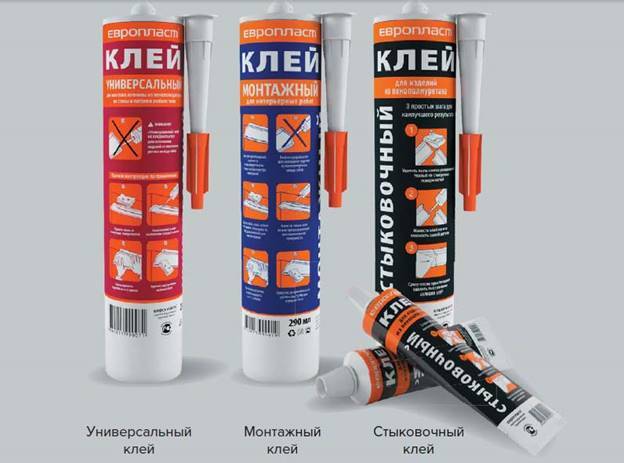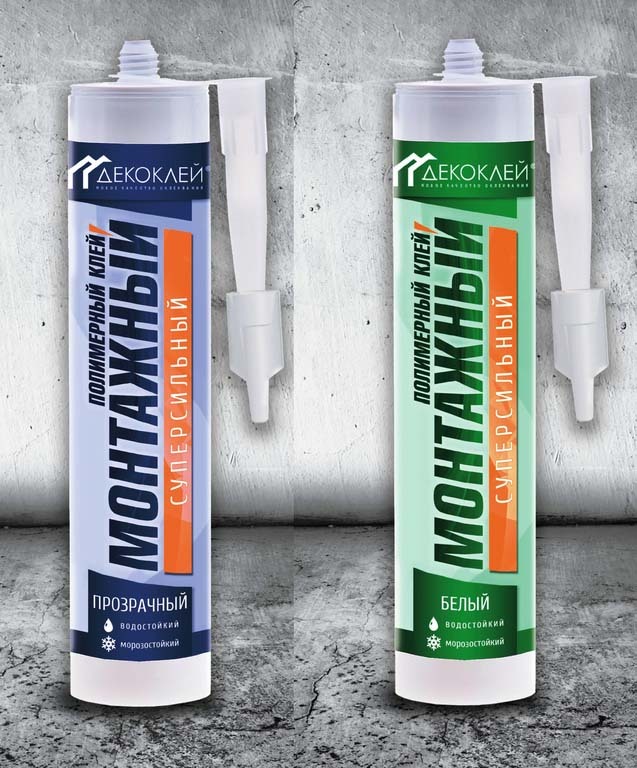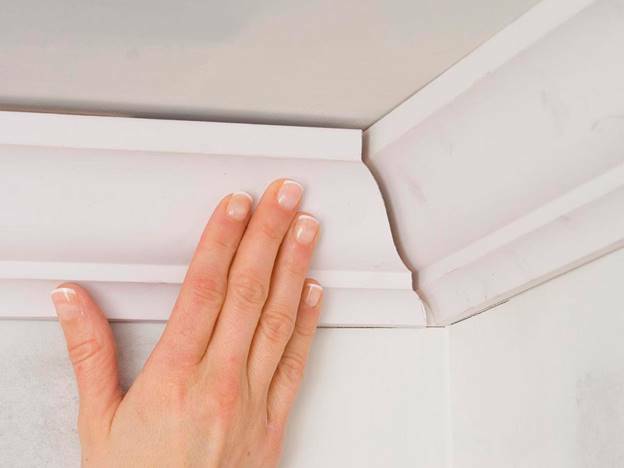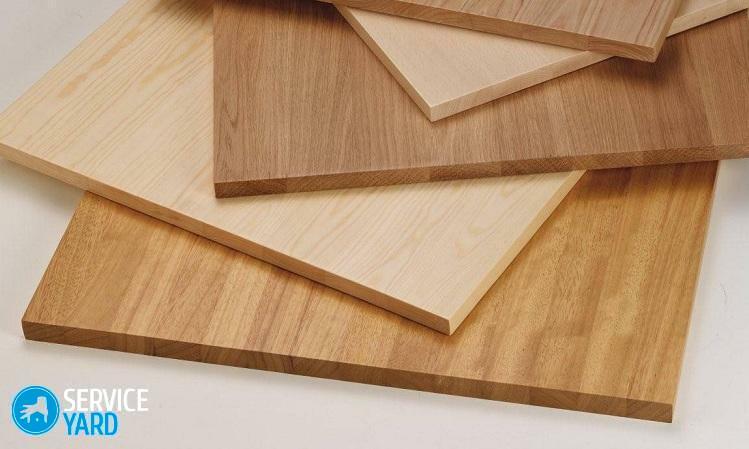Polyurethane is composed of polyol and isocyanate. It is considered a synthetic material, an elastomer, which, after stretching, takes on its original shape. For gluing polyurethane to each other, different types of adhesives are used - they are chosen depending on the composition material, its density, ozone resistance, acid resistance, as well as temperature conditions exploitation. A variety of polymer adhesives and putties are what you can use to glue polyurethane together.
Types of adhesives for polyurethane
Adhesives specially designed for polyurethane are practical, they lay on the surface in a thin layer and fill all the voids. Most dry quickly to the surface and bond the elastomer sheets firmly together. They are resistant to moisture and do not crack when the temperature changes.

Polymer adhesives
The compositions are made on a polymer basis and harden in a few minutes. They securely fasten the material to the bases of:
- concrete;
- wood;
- drywall;
- brickwork.
Important! They work quickly with polymer glue: due to the accelerated hardening process, it is impossible to level the surface. After application, immediately wipe off all the smudges, since it will be difficult to work with them afterwards: you will have to use a solvent or sandpaper.
After drying, the seams remain intact, do not crack or expand with temperature changes.

They are inserted into an assembly gun and applied to the surface. After 40-60 seconds, the material is already seized, therefore, during this interval, it is necessary to press two planes together. Polymer glue is white and transparent and can be used to glue polyurethane skirting boards.
Adhesive putties
Used for general construction works and interior decoration of premises. The material allows you not to level the wall before gluing polyurethane products, since the consistency of the putty allows you to do this in the process. The adhesive mixture quickly hides surface irregularities, defects and dents. After application, the polyurethane does not need to be pressed against the plane for a long time. Work with the material is carried out in closed rooms, since it does not emit harmful substances.
Advantages:
- reliability;
- strength;
- ease of use;
- availability;
- uniformity of application;
- independent production of the mixture.

Such a composition can be made independently: for this they take PVA glue, dry finishing putty, water and a container for cooking. Proportional calculation - 4 parts of dry putty to 1 part of PVA. All components are mixed in a bucket, water is added to the state of a thick suspension. The composition is left for 5 minutes, mixed, used as directed. Ready-made putties are sold in buckets or in tubes - they are inserted into the gun for installation.
Assembly adhesive
To fix lightweight polyurethane products, special assembly adhesives are used. Most often they are used to attach stucco moldings, ceiling plinths and cornices. They fix products on glass, tiles and other surfaces. The assembly compound is used for wall mounting - it is durable and elastic, but it is not recommended to use it for joints, as cracks will appear over time.

Despite this amount, one tube is enough for 7-8 applications, since the consumption of assembly glue is uneconomical. Its thick consistency evenly lays down on the surface and fixes the product even on a wooden base.
Advantages:
- leaves no residue after drying;
- when hardened, it becomes similar to a light-colored primer.
In hardware stores, you can find assembly glue in cans or buckets of 500, 1 and 5 kg. It is recommended to apply the composition with a spatula.
Important! Instead of mounting glue, liquid nails are also used. They are made on an acrylic base and are designed to hold lightweight items.
Docking glue
It is better to glue polyurethane with assembly tubes, and joint glue is suitable for seams. To fasten molded products at the joints - cornices or moldings, this particular composition is suitable. The joint mixture differs from the assembly one:
- Has a high adhesive power. Polyurethane products experience heavy loads on the seams; over time, cracks appear here and material comes off. Docking glue will securely fix the products in a certain position without changing the appearance.
- Used instead of putty. Available in white or transparent, it is suitable as a putty in places where you need to level the surface or mask the seam. The gaps between the polyurethane skirting boards are perfectly covered with docking glue and hide unevenly cut edges.
- Set quickly. Already after a minute of pressing the material against the wall, the processes of solidification of the mass take place. After a few minutes, it will be difficult to tear the product off the wall, while the glue mass will remain on one of the parts of the finish.
- Paints and varnishes fit well. Polyurethane skirting boards are painted before fixing, and the joints are tinted after finishing. The glue creates a light layer that can be colored in several steps.

After that, the composition is no longer amenable to adjustment, therefore, it is immediately necessary to fix the product evenly and correctly.
Popular brands of glue
Depending on the properties of the adhesive composition, its adhesion changes, as well as the time for adjustment. Popular brands of adhesive mixtures for polyurethane:
- NMC Adefix P5 - product from Belgium, intended for fixing polyurethane or polystyrene to a porous plane.
- Moment DecoStyle is universal - suitable for wide use, elastic and waterproof. Can be used in bathrooms.
- TITANIUM Wild - quickly sets, resistant to moisture, easily tolerates low temperatures. Used on concrete, wood, drywall.
- Europlast Assembly - has a pasty consistency, fixes polyurethane well on a porous base.
- Docking Orac Decor - made on a polyurethane base, sets in 30 minutes.
- Docking DECOMASTER - forms a transparent seam, sets in half an hour.
It is better to choose compositions based on polyurethane - they fix the joints well, or based on acrylic - they firmly attach the products to the wall with any base.
How to use
When it is chosen how to glue polyurethane products to the wall, they begin to study the recommendations on the packaging of the composition. If it is a dry putty, dilute it with water until the desired consistency is obtained. If a tube with a mass is used, it is inserted into the assembly gun and the spout is unscrewed. Before use, the wall surface is cleaned of dust and dirt.

Press down for 40 seconds and release. If a joint mixture is used, it is applied between the edges of the products and the evenness of distribution and fixation of the material is corrected. The glued products will become completely motionless after 30 minutes, the joint can be painted.
Calculation of the amount of glue
Most often, polyurethane skirting boards are fixed on adhesive mixtures. To calculate the amount of mass, calculate the perimeter of the room, and also add the length of all the protrusions where the baseboards will be installed. The calculation is simple: on each tube the number of running meters is indicated for which this pack will be enough.
When choosing which glue to fix polyurethane products with, take into account their weight, as well as the presence of additives in the composition. For example, if the finish is not made of pure polymer, but with the addition of chemical plasticizers, then a certain type of glue may not work. Before buying, it is better to immediately clarify all the characteristics of the composition.



